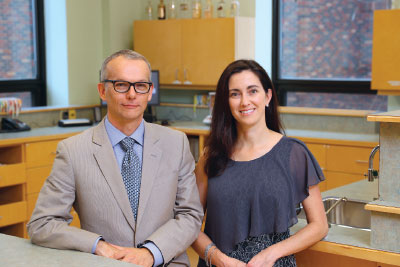Suicide Prevention at the Pharmacy
Abstract
The vast majority of community pharmacists will encounter patients at risk for suicide. Are they prepared to help?
Community pharmacists are perhaps the most readily accessible of health care professionals. Patients see them regularly to fill and refill prescriptions, ask questions about over-the-counter medications and products, and receive influenza vaccinations. Their interactions with patients usually occur without appointments, sometimes in the wee hours of the night depending on the pharmacy’s hours. In rural areas, the community pharmacist may be the only health professional within 20 miles.
With such accessibility, most pharmacists will encounter patients at risk for suicide. Research presented at the American Pharmacists Association Annual Meeting last March revealed that 98% of pharmacists and pharmacy technicians have interacted with patients who had risk factors or warning signs of suicide, and more than 22% knew a patient who died by suicide. More recently, a study of community pharmacists in Australia and Canada published in Psychiatric Services in Advance found that 66% of pharmacists have had patients disclose suicidal thoughts to them.

A literature review by David M. Gardner, Pharm.D., M.Sc., and Andrea L. Murphy, Pharm.D., found few papers with concrete recommendations for collaboration between community pharmacists and other health professionals to address suicidality in patients.
“It comes up in regular and routine clinical care that people disclose that they might be having thoughts of suicide or have had a previous attempt,” said lead author Andrea L. Murphy, Pharm.D., an associate professor at Dalhousie University College of Pharmacy in Halifax, Nova Scotia. “It can be situational and quite random, like patients coming in for a blood pressure check and disclosing they took acetaminophen to end their life. It can be quite unexpected.”
Yet by and large, community pharmacists feel unprepared to respond appropriately to these patients. A study published in the January 2019 Mental Health Clinician found that only 4% to 8% of pharmacists felt they had the requisite training, skills, support, or supervision to engage and assist suicidal patients, and only 22% felt comfortable asking patients direct and open questions about suicide. Only 25% expressed interest in being directly involved in suicide prevention, such as providing screening or counseling at-risk patients, and 46% felt neutral on the topic. However, 48% expressed interest in being indirectly involved in suicide prevention, such as distributing patient literature, and 56% were interested in receiving training in suicide prevention, such as a continuing education program or workshop.
“The majority wanted training and wanted to be involved, but they expressed hesitancy. The thought was that if they were better trained, they would be more likely to get involved because they really want to help their patients,” said lead author Marshall E. Cates, Pharm.D., a professor and chair of the Department of Pharmacy Practice at McWhorter School of Pharmacy at Samford University in Birmingham, Ala.
The exact extent to which community pharmacists actually intervene with suicidal patients, the actions they take, and the impact their interventions have on outcomes are not well understood. A review conducted by Murphy and her colleagues in the November 2017 Canadian Pharmacists Journal revealed that the literature is dominated by opinion pieces encouraging both pharmacist involvement in suicide prevention and collaboration between pharmacists and other health care providers, but there were few concrete recommendations.
“Although collaboration with other health care professionals was discussed as an important mechanism in reducing suicide and related outcomes, there was little to no discussion in the literature regarding the ‘how to’ for pharmacists’ integration or mechanisms to establish effective and efficient collaborative relationships in suicide risk assessment and mitigation,” Murphy and colleagues wrote.
Yet there is a case to be made for collaboration, said Cates.
“Think about how people die by suicide. For a fair number of them, it’s by drug overdose, and most of the medications used are prescription medications, alone or in combination with over-the-counter medications. Pharmacists can be gatekeepers, they can help determine whether patients are stockpiling medications, and they can work with physicians to limit quantities of medications dispensed,” Cates said. “Also, they can help monitor antidepressant therapy for efficacy, side effects, and adherence and contact physicians with important information about patients.”
Findings like Murphy’s and Cates’ should raise awareness among psychiatrists, said APA President Bruce Schwartz, M.D., deputy chair and professor of psychiatry in the Department of Psychiatry and Behavioral Sciences at Montefiore Medical Center and the Albert Einstein College of Medicine.
“Pharmacists can be another set of eyes on patients. We need to be receptive to hearing from them because patients may say things to them that they haven’t said to us. It’s not a breach of privacy for a pharmacist to call and say that your patient doesn’t seem to be doing well,” Schwartz said. He added that pharmacists should be aware of suicide crisis and mental help hotlines as well as which emergency departments have emergency psychiatric services.
Psychiatrists should feel free to reach out to their local community pharmacies to open the lines of communication, said David M. Gardner, Pharm.D., M.Sc., a professor in the Department of Psychiatry at Dalhousie University College of Pharmacy and one of Murphy’s coauthors.
“The feedback from pharmacists is that they are presented with patients at risk for suicide, but they don’t often feel that they have the resources at hand or know who’s available in the local community,” Gardner said. ■
“Survey of Australian and Canadian Community Pharmacists’ Experiences With Patients at Risk of Suicide” is posted here.
“Pharmacists’ Attitudes, Interest, and Perceived Skills Regarding Suicide Prevention” is posted here.
“A Scoping Review of Community Pharmacists and Patients at Risk of Suicide” is posted here.



